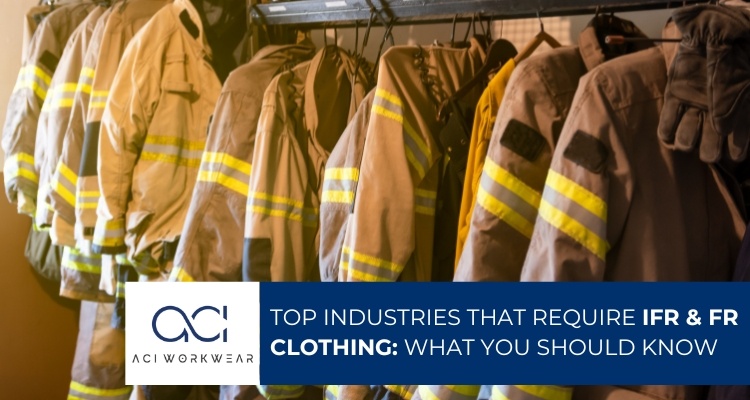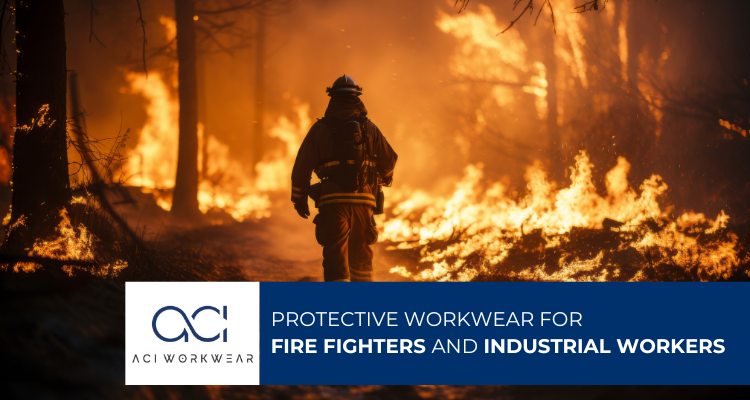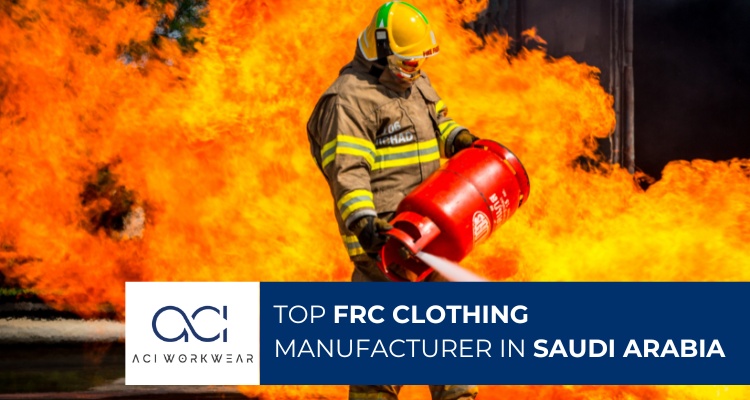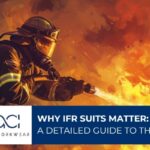
Why IFR Suits Matter: A Detailed Guide to Their Purpose
30/09/2024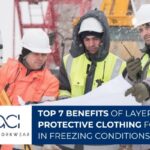
Top 7 Benefits of Layered Cold Protective Clothing for Workers in Freezing Conditions
22/10/2024Introduction
Flame-Resistant (FR) and Inherent Flame-Retardant (IFR) jackets are crucial for keeping workers safe in fire risking industries. FR and IFR clothing offer an important layer of protection in risky situations, resist flames and extinguish themselves when ignited.
Workers wearing FR and IFR coverall have a protective barrier that gives them extra time to escape dangerous environments. FR and IFR uniform can handle tough conditions and significantly reduce the risk of serious injuries from flash fires, electric arcs, and other heat-related accidents.
However, you may be looking for the appropriate industry-specific FR and IFR dress for your industry. To help you here we have written this blog on top industries that require FR and IFR clothing for workers on a daily basis.
Let’s understand and decide particular FR and IFR clothing for your industry.
IFR Clothing
IFR (Inherent Flame Retardant) clothing is manufactured to handle high temperatures found in fields like electrical work, petrochemicals, and oil & gas. IFR clothing is made from materials that are non-flammable, self-extinguishing, and cannot catch fire easily.
FR Clothing
Flame-resistant (FR) clothing is designed to protect the wearer from heat, sparks, flames, and hot tools or machines. It is made from special materials and coatings that can resist high temperatures and fire.
Difference between IFR and FR clothing
The terms “flame retardant” and “flame resistant” are usually misunderstood, but there is a difference between them.
Flame-resistant (FR) clothing is made from fibers that naturally resist burning when they encounter flames. For instance, when flames touch wool, the fibers help to put out the fire, making it hard for wool to catch fire completely.
Inherent Flame-Retardant (IFR) clothing is made from fibers treated with chemicals to boost their fire resistance.
While they can catch fire, they burn much more slowly than regular fabrics and have the added advantage of putting themselves out. IFR coverall will stop burning as soon as the flame goes out. So, IFR wearing workers will have extra safety from catching fire.
Top Industries That Require IFR & FR Clothing
1. Electricity & Power Industry
Workers in the power and electricity industry face a high risk of arc flashes with high temperature. Here, FR and IFR clothing is essential to protect against burns and injuries. FR and IFR coverall offer insulation and reduce the risk of serious harm in unexpected events.
2. Food Processing Industry
In the food processing industry, high heat and pressure is used to make cooked food. It can create dangerous situations and increase the risk of fires. Despite better infrastructure and safety regulations, giving workers suitable FR and IFR clothing ensures their safety and convinces them about their health and well-being.
3. Paper Industry
The paper industry usually has fires due to flammable materials, dust, and chemicals. In emergencies, FR and IFR clothing protects workers from burns and helps them evacuate safely. To minimize risks in paper production, using the right protective FR and IFR gear is very important.
4. Chemical Industry
FR and IFR clothing are vital for the safety and well-being of workers in the chemical industry because of the potential risk of fires and explosions. They offer crucial protection against hazardous substances, fires, and chemical exposure, especially during spills or leaks.
5. Oil and Gas Industry
In the oil and gas industry, your workers need to wear FR and IFR clothing for safety against potential ignition of flammable materials and gas vapors. FR and IFR protective clothing, including shirts, pants, and gloves, reduces heat exposure and helps prevent burns. It significantly lowers the chances of fire-related injuries and creates a safer work environment.
6. Metals Industry
In the metals industry, FR and IFR clothing safeguard workers from high heat, electric arcs, and molten metal. FR and IFR gear, including balaclavas, gloves, and shirts, prevent burns and ensure comfort during welding and smelting.
7. Construction Industry
Construction workers need to wear FR and IFR clothing because they deal with flammable materials, electrical dangers, and falling items. FR and IFR gear, such as base layers, utility shirts, and high-visibility hard hat liners, help prevent burns and injuries while ensuring comfort.
8. Environmental Industry
Environmental workers face risks from wildlife, severe weather, and rough landscapes, especially in forestry management. To minimize these hazards, it is important to wear the right personal protective equipment (PPE). Using FR and IFR clothing is vital for ensuring safety and effectiveness while operating chainsaws and other heavy machinery in challenging environments.
9. Pharmaceutical Industry
In the pharmaceutical industry, workers face serious risks, especially when handling unstable substances. That’s why it is crucial to wear FR and IFR clothing during emergencies. IFR and FR jackets help protect against burns and smoke inhalation. It also offers some protection from biological hazards.
10. Safety & Emergency Services
Emergency responders and firefighters face many dangers, including fire, flammable materials, and chemical hazards. Your workers must wear FR and IFR clothing that meets complying standards for flashfire safety. This Personal protective equipment (PPE) significantly reduces risks, allowing them to manage emergencies effectively.
11. Research Organizations
Extreme weather, such as very hot or very cold temperatures, is common for researchers and can lead to serious health risks like hypothermia or heat stroke. In these dangerous conditions, wearing FR and IFR clothing is essential for protection and can help prevent injuries like frostbite and heat rash.
Role of Quality IFR and FR Clothing
High-quality FR and IFR clothing are important for workers in risky environments. Trusted suppliers ensure that items such as jackets, balaclavas, and overalls are properly rated to protect against thermal events like electrical arcs and flash fires. Clear labels and details about arc ratings help workers choose the right protective gear.
By wearing well-made FR clothing, professionals can significantly reduce their chances of burns, injuries, and other dangers from fire, explosions, or electrical risks. Quality personal protective equipment (PPE) provides reliable safety, allowing workers to perform dangerous tasks with confidence and security.
Limitations of IFR and FR Clothing
There are some of the limitations of FR and IFR clothing.
FR and IFR clothing are important for safety, but they can't resist fire. These clothes may catch fire in extreme conditions, but they won't melt into the skin and will only burn for a short time. Still, if safety rules are ignored, workers can face serious injuries.
It's important to classify FR clothing based on the arc hazard risk category (HRC). Layering clothing can provide extra protection by allowing additional layers to absorb heat and prevent burns if the outer layer fails. Ensuring that each layer is flame-resistant is crucial for effective safety.
Another limitation of IFR and FR gears is that they don't protect against projectiles or explosions. Workers should avoid wearing synthetic materials under FR clothing, as they can melt and cause serious injuries. It's vital to wear appropriate PPE for all potential risks in the workplace.
Conclusion
Thus, FR and IFR clothing is useful for worker’s safety across industries. Now, you can choose your best FR and IFR clothing for your specific industry without any hassle. If you’re struggling to find your industry in this blog, you can connect with us.
ACI Workwear is a global industrial workwear manufacturer. We have had expertise as a FR clothing and IFR clothing manufacturer for years. We provide workwear clothing for various industries and also provide custom workwear as per the industry requirements.
Get in touch with us today!






